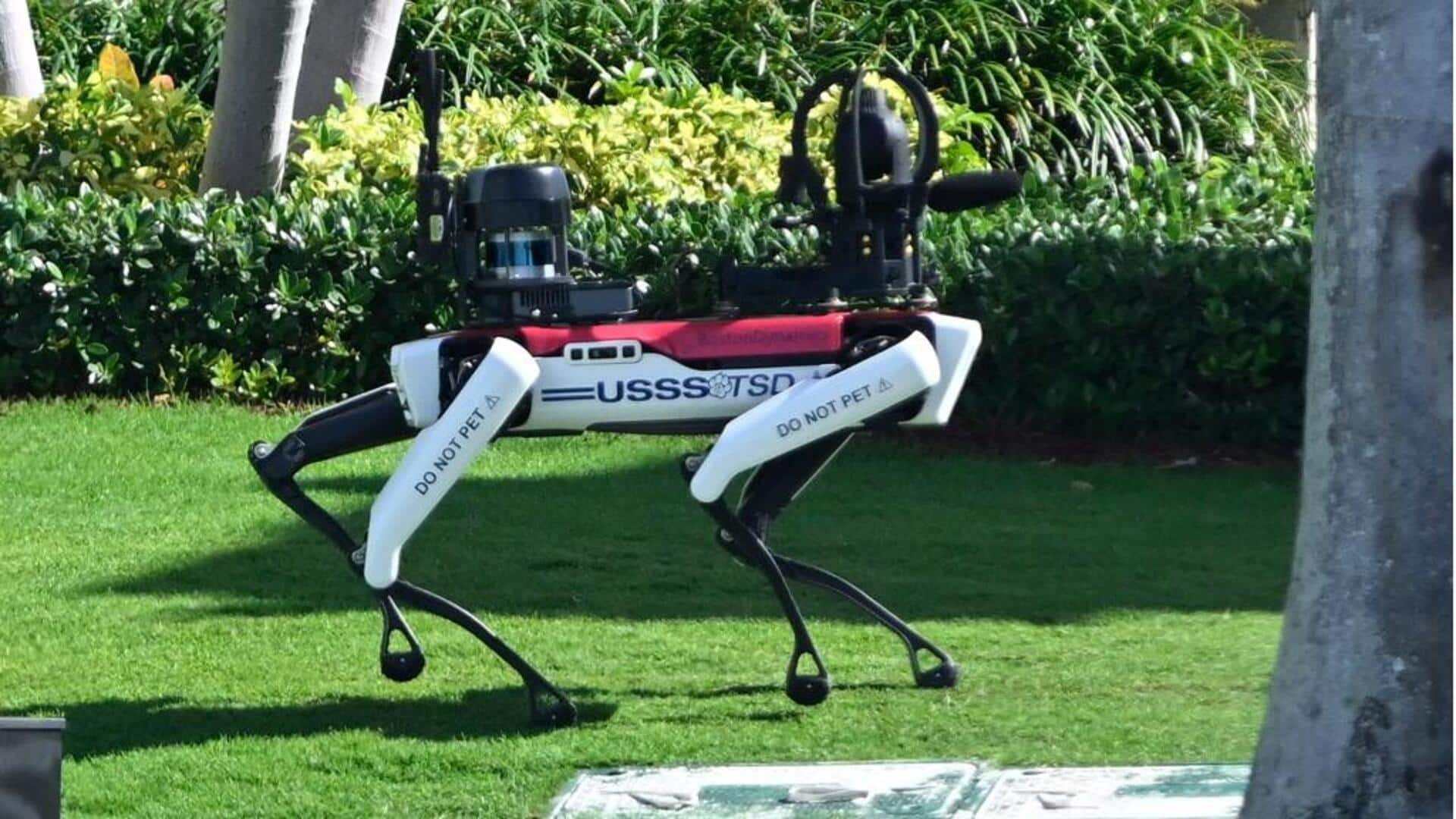
Robotic dog now part of Trump's security detail at Mar-a-Lago
What's the story
After winning the 2024 US presidential election, Donald Trump has stepped up his personal security. The newest member of his security detail? A robotic dog, now on patrol at his Mar-a-Lago estate in Palm Beach, Florida. The high-tech pooch was spotted on Friday morning, casually strolling across the estate's lawns with a conspicuous warning sign reading: 'Do Not Pet.'
Safety measures
A response to security concerns
The move to add cutting-edge technology to Trump's security detail comes after two alleged assassination attempts during his campaign. The incidents have raised serious alarm bells about his safety. The US Secret Service, which is responsible for Trump's security, confirmed that the robotic dog is part of their all-encompassing strategy to protect the President-elect.
Technological features
Robotic dog's capabilities
The robotic dog, which is a product of Boston Dynamics, is a remote-controlled surveillance unit with state-of-the-art sensors and technology. Although the Secret Service has not revealed specific details about what it can do, it is known that the robotic dog is designed to assist in protective operations with its surveillance and sensor technology.
Wider use
Robotic dogs in public safety
Robotic dogs have become a favorite among public safety agencies nationwide, as a way to shield law enforcement officers and first responders in the line of fire. The New York Police Department (NYPD) unveiled a robotic K-9 unit called "Digidogs," last year. Apart from law enforcement, these bots have been deployed for vital tasks like looking for survivors after a parking garage collapse in Lower Manhattan last year.
Strategic deployment
Military applications of robotic dogs
The military has also found use for these advanced machines. Earlier this year, Ukraine's military deployed 30 robot dogs, each costing around $9,000, against Russian forces. The "metal pooches" served as reconnaissance units that could swiftly deliver supplies, reducing the risk to human soldiers on the front lines.